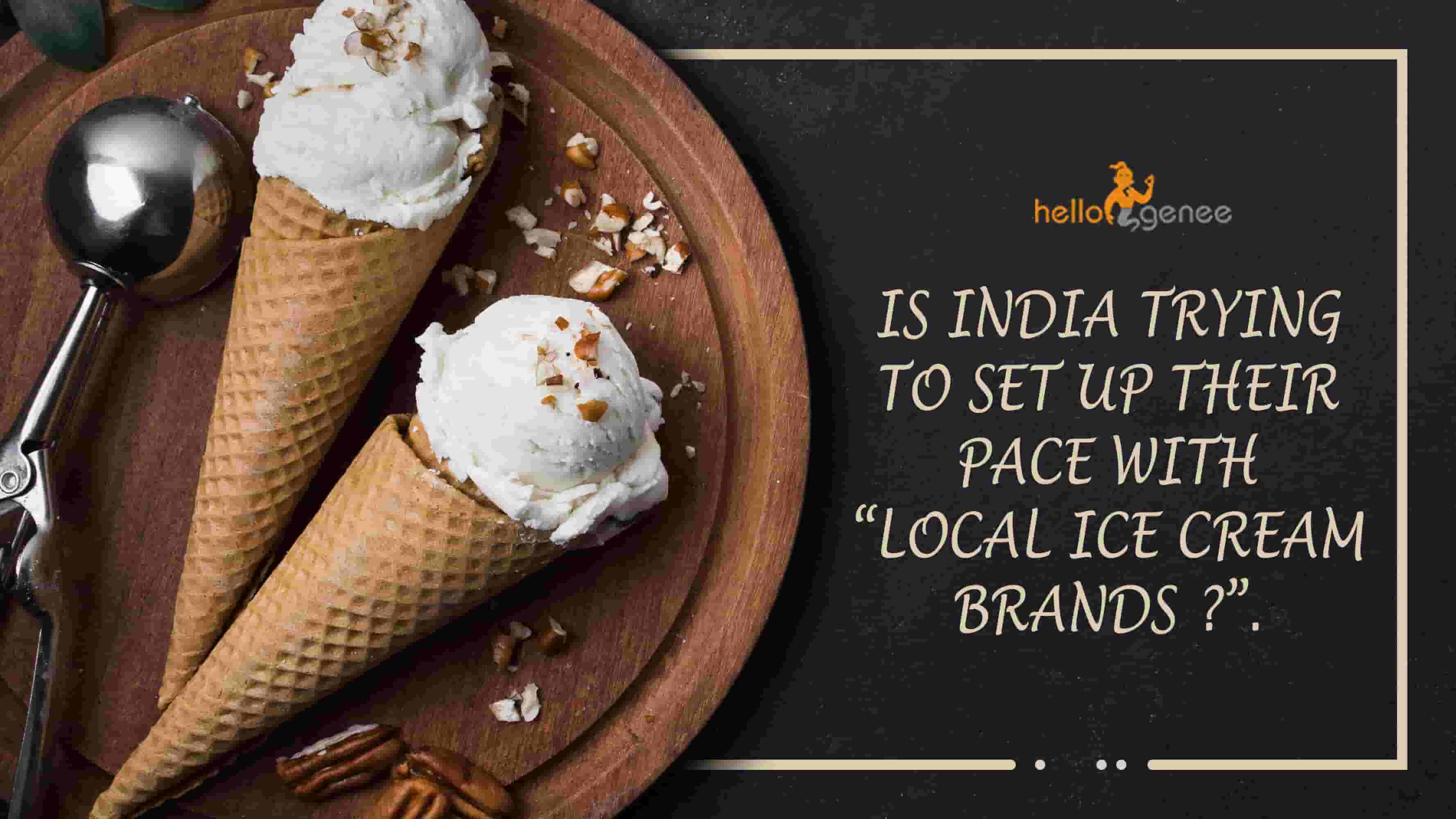LOCAL ICE CREAM BRANDS STEP UP NATIONAL PLAY
The Rs 9,000-crore ice cream market (including unorganized companies) is undergoing a transformation. As regional brands such as Arun, Cream Bell, Vadilal Dairy International, and Heritage compete with the strength of Kwality Walls, Amul, and others, the industry expects to expand at a rate of near to 10% over the next several years, and the brand map for the business will alter forever.
Regional brands are under increasing pressure from smaller, rising domestic companies in their respective countries. Simultaneously, there is an increasing interest for homegrown labeling in food and dairy. According to the 2017 Nielsen Global Brand-Origin study, despite a rising preference for global brands, the only categories with a substantial preference for local brands were dairy and fresh foods.
Regional brands are treading carefully into the new territory. Instead than expanding into numerous regions and unleashing an advertising blitzkrieg, they are taking one market at a time, leveraging their expertise of local palates and supply infrastructure.
In November
2017, Arun ice creams from Chennai-based Hatsun Agro Products Ltd joined the Mumbai
market (with retail stores in Mulund and Bhiwandi). It began in Tamil Nadu,
Andhra Pradesh, Telangana, Karnataka, Orissa, Maharashtra, and Goa before
expanding to the largest metropolis. Also, the first stores in Mumbai are
located distant from prominent locations but are well-populated with customers
who are aware of the brand.
Hatsun Agro's chairman and managing director, R G Chandramogan, claims he picked the name Arun (meaning sun) for his ice creams since more sun meant greater demand for ice cream. Hatsun has developed from a cottage industry operation to a national brand with a 4.5% market share. At the same time, it has grown to become the largest private dairy in the country.
"We don't want to stretch ourselves too thin," adds Chandramogan. We compete for prominence in all markets in which we operate." He also emphasises the cost benefits that dairy players have when marketing ice cream. "The peak season for ice cream (summer) coincides with the low season for milk production." Sourcing at competitive pricing is consequently a difficulty for any business lacking sufficient backward integration," he argues.
Hatsun is able to save 4% on milk-based raw materials (for a total cost advantage of 18%), and these savings (not accessible to a non-dairy player) are subsequently reinvested in the business, such as advertising and entering new markets.
READ ALSO>>> Enjoy spice?you'll love these whiskies
NATIONAL FOOTPRINT
Ice cream is a severely fragmented and unorganized market. Aurangabad, for example, is expected to contain 46 minor brands. This preserves margins at around 4%. This is exacerbated when national players (including international corporations) compete for the same piece of the pie.
While this encourages many businesses to
pursue the national journey, they balance their goals with local insights and
lessons learned from others' mistakes. They are adapting their development
strategies to include findings such as brand creation being difficult in price
sensitive regions like Uttar Pradesh but simpler in educated markets like
Kerala.
"Gujarat's Havmor has stretched itself thin," an industry expert revealed on the condition of anonymity. Margin pressures had begun to exert themselves on them. The promoters intended to sell the ice cream firm, thus creating a national profile was critical to increasing the brand's worth." In November, the Lotte Group of South Korea paid Rs 1,020 crore for Havmor.
In contrast, RJ Corp-owned Devyani Food Industries, which manufactures Cream Bell ice creams, has rapidly expanded across India and has broken into the top five ice cream brands. According to Nitin Arora, CEO of Devyani Food Industries, Kerala is one of the few markets where it is not currently available. It began operations in Tamil Nadu this year, and it has been operating in Karnataka and Andhra Pradesh for the past five years. The revenue share is around 55% from North India (its native market) and 45% from the rest of India.
In five years, Cream Bell's manufacturing capacity has nearly doubled. According to Arora, the FY18 capex target is to invest Rs 250 crore (Rs 210 crore already invested). "The cost matrix rises the moment you leave your backyard markets," he adds.
Stories like these inspire players like Andhra Pradesh Chief Minister N Chandrababu Naidu, who launched Heritage Foods. Brahmani Nara, Naidu's daughter-in-law and executive director of Heritage Foods, notes that while curd accounts for 75% of the firm's income in the value-added goods area, the company is now focused on other segments such as ice creams. "Ice creams will play a significant part in the rationalisation of our product line," Nara adds. Heritage distributes ice cream in the South, but it wants to expand into the national market.
According to Mintel research, the global ice cream industry will reach 13 billion litres in 2016, with India and Vietnam among the world's fastest expanding markets. Also in 2017, India's volumes are likely to surpass those of the United Kingdom. All of this has inspired another player, Vadilal Dairy International (supported by a wing of the family that has the rights to the brand in the southern markets while Vadilal Industries has the rights to the name in the north and west), to more than treble its outlets in the next two years.
According to Rahil Gandhi, director of Vadilal Dairy International, the company is investing in freezers as well as working on brand promotion and exposure. It is focusing on growing its reach as well as consolidating its base, but the shift is costly, says Gandhi as he prepares to make the long journey to the big league.












Comments